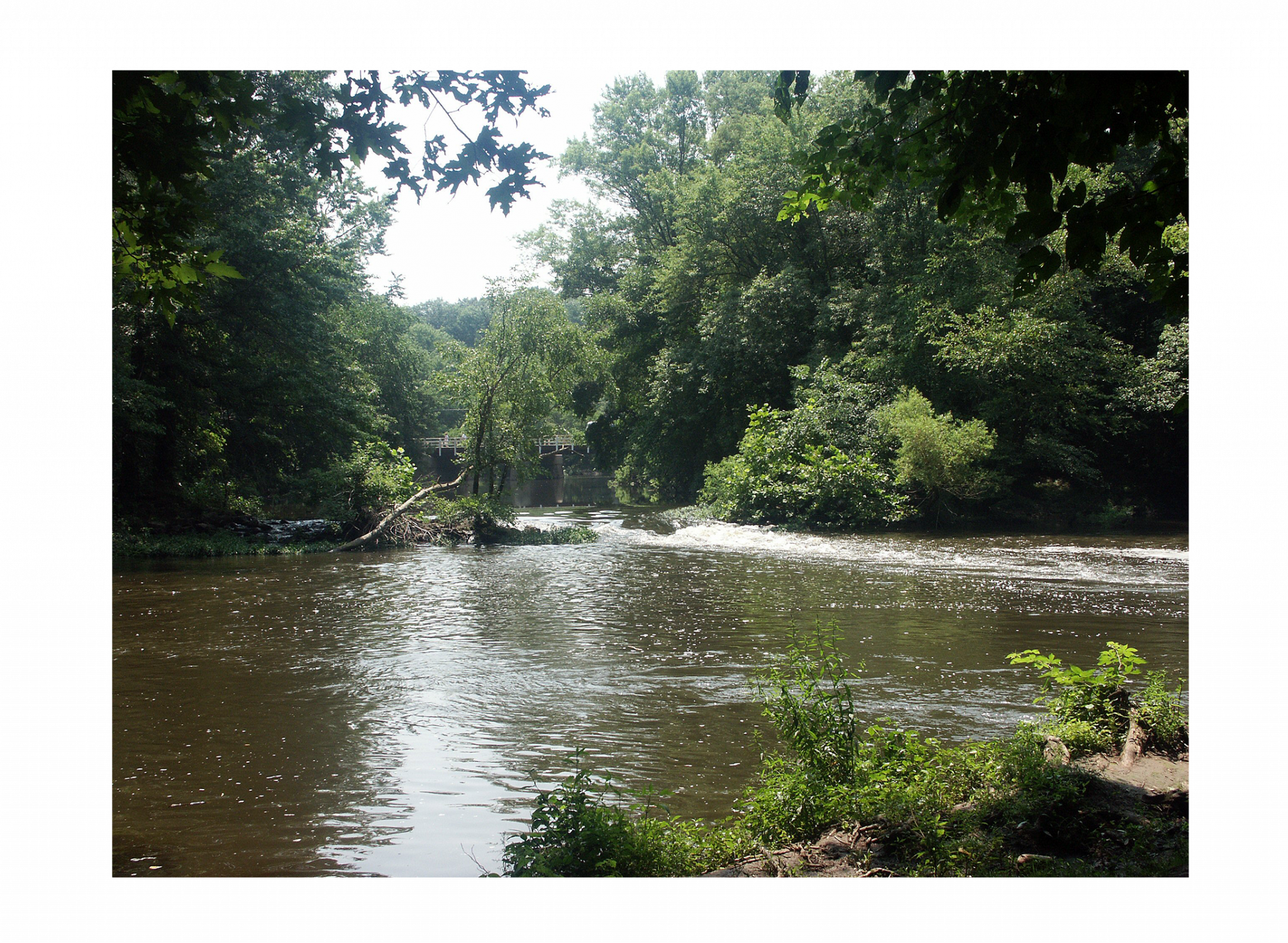The obsolete Headgates dam on the Raritan River in Somerset County will be removed using natural resource damages funds secured by the state, opening significant stretches of the river’s north and south branches to fish passage for the first time in nearly two centuries.
“The Raritan River is part of an estuary ecosystem that historically provided spawning habitat for migratory fish such as shad, herring and striped bass,” New Jersey Department of Environmental Protection (DEP) Commissioner Shawn M. LaTourette announced in a statement on Dec. 16. “The removal of this dam will enhance the ecological health and biological diversity of these waterways while improving fishing, kayaking and canoeing opportunities for people throughout the region.”
| Over the past decade, three dams downstream of the Headgates Dam and another on the Millstone River have been removed. When the Headgates Dam is removed, the only dam remaining on the main stem Raritan will be the Island Farm Weir Dam, near the confluence of the Millstone River, according to the statement.
The Island Farm Weir Dam, equipped with a fish ladder since its construction in the 1990s, is not a candidate for removal because it supports public drinking water intakes operated by the New Jersey Water Supply Authority. However, as part of its continuing effort to improve the ecological health and biological diversity of the waterway, DEP is working on ways to improve fish passage at this dam, according to the statement. |
The Murphy Administration has prioritized securing natural resource damage settlements from polluters to restore natural resources in the state, according to the statement. Natural resource damages are defined as damages for injury to, destruction of, loss of, or loss of value of natural resources including surface and ground water, sediments, wetlands, plants, and animals.
Over the history of the DEP natural resource damages program, the state has recovered more than $800 million from polluters covering some 7,000 sites and has restored more than 1,000 acres of habitats, according to the statement.
Removal of dams and restoring the flow of the waterways within the Raritan watershed to a more natural state to help rebuild fish populations is a priority for multiple government and non-profit organizations, including the DEP, the National Oceanic and Atmospheric Administration and the U.S. Fish and Wildlife Service.
In addition to blocking fish passage, dams create stagnant stretches along rivers that can be low in dissolved oxygen that aquatic life needs.
They also exacerbate excessive algae growth that diminishes recreational and scenic enjoyment, according to the statement.
The species of migratory fish that are benefitting from dam removals include American shad, alewife, blueback herring and striped bass – species that live most of their lives in the ocean but need freshwater rivers and streams to spawn, according to the statement.
Another species that is benefitting is the American eel, which spends much of its life in fresh water but migrates into the ocean to spawn.
Populations of these species are stressed in the Mid-Atlantic region for a number of reasons, including dams that have blocked access to freshwater habitat. Fish are known to naturally start using these waterways soon after dams are removed, according to the statement.
The commencement of work is pending securing of permits and other logistics.
“The ecological and recreational benefits from a free-flowing Raritan River with restored historic fish runs are extraordinary and enhance the entire NY/NJ Harbor Estuary,” Greg Remaud, of NY/NJ Baykeeper, said in the statement.
The Headgates Dam and Raritan Water Power Canal were built in 1842 to spur economic development in the region. At its peak, the dam served a gristmill, machine shop and foundry, a paint works, flour mills, the Somerville Water Co., and the Raritan Woolen Mills, according to the statement.
It was reconstructed in 1959 due to deterioration and is currently owned by Somerset County.
For more information on the DEP’s Office of Natural Resource Restoration, visit www.nj.gov/dep/nrr/

